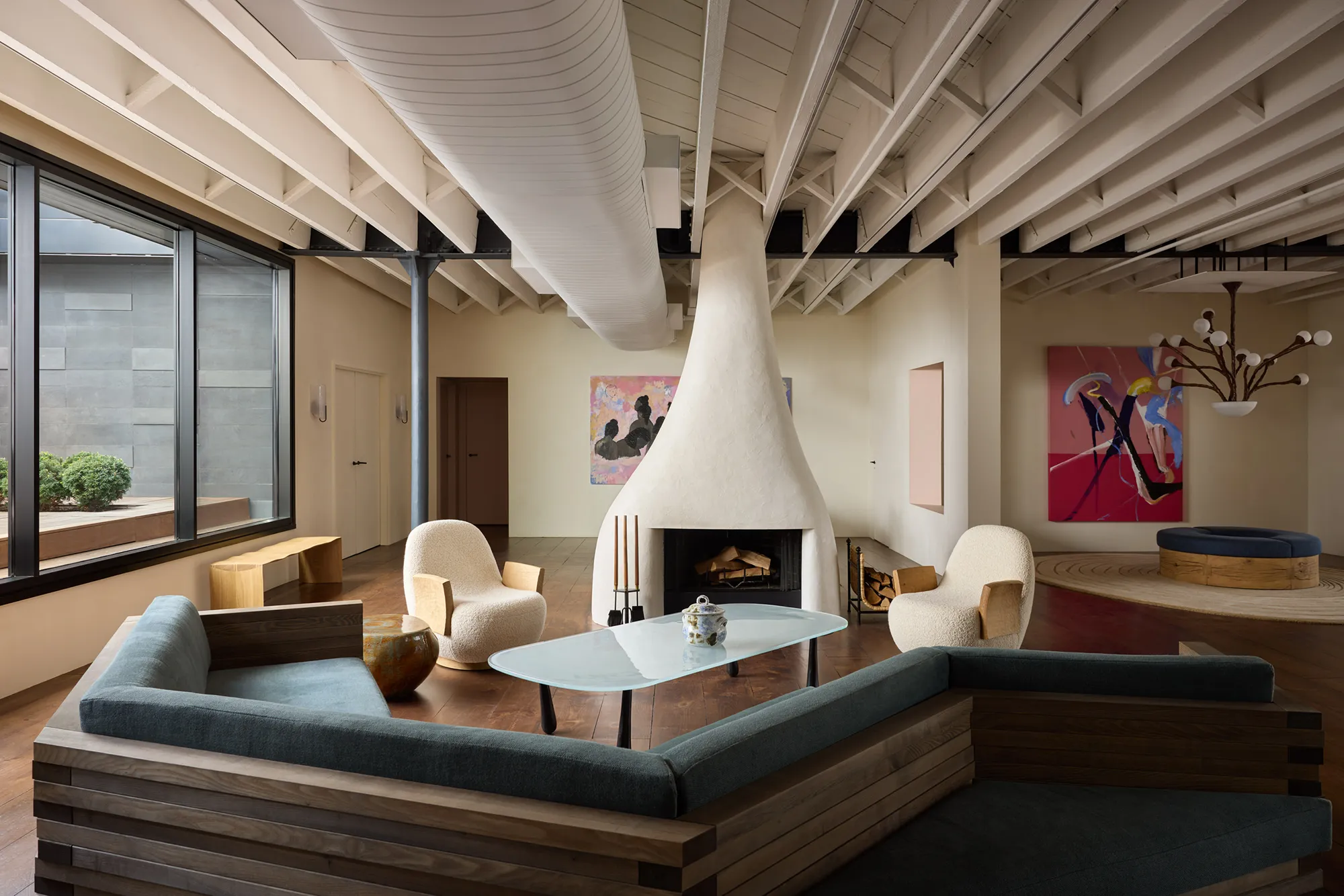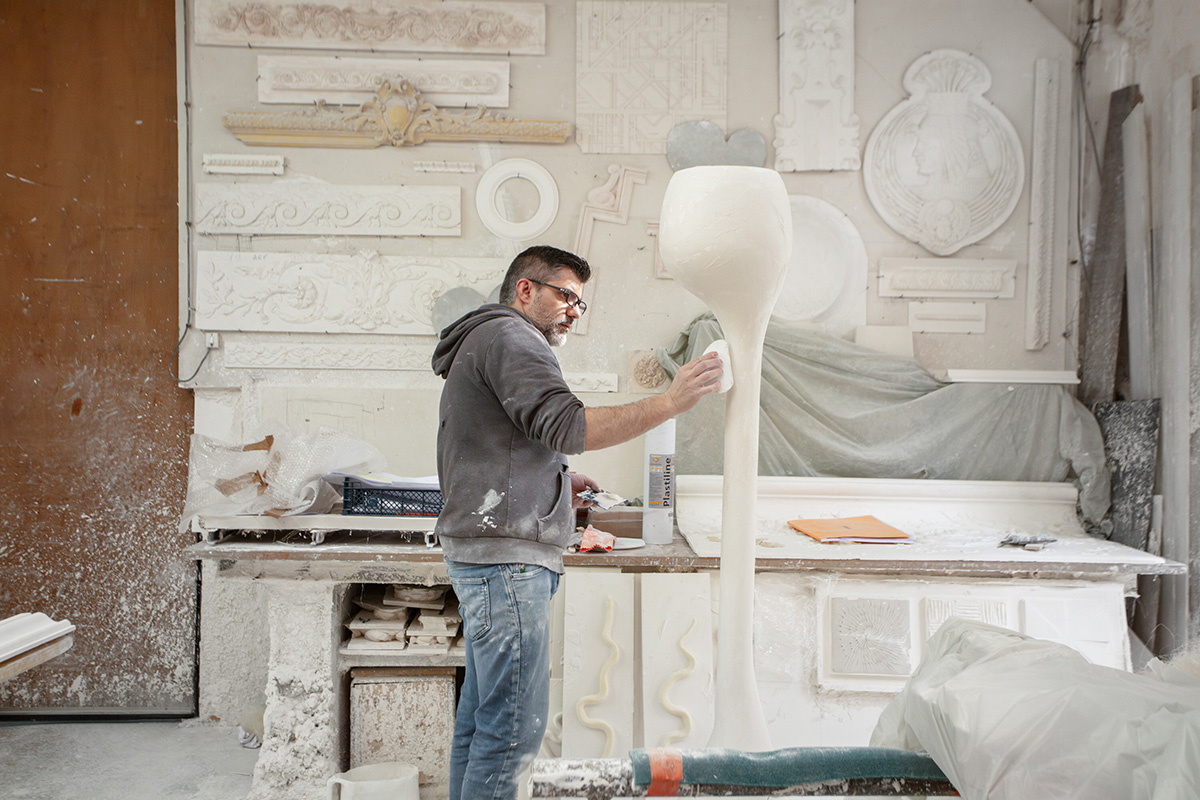
STAFF ESPACES VOLUMES, proudly certified as a Living Heritage Company (Entreprise du Patrimoine Vivant - EPV) since 2016, has specialized since 1988 in the restoration and creation of decorative staff elements. These include cornices, mouldings, bas-reliefs, architectural ornaments, ceilings, fireplaces, staircases, furniture, and on-site installations for a variety of projects (apartments, houses, hotels, offices, boutiques, restaurants, museums, private mansions, and historical monuments).
Our work
The history of staff dates back to the 19th century, an era when it was widely used in architectural decoration. Typically composed of plaster, lime, sand, and vegetable or animal fibers, staff was employed to create mouldings, cornices, rosettes, and other ornamental relief elements with remarkable precision. Its ability to replicate intricate details made it especially valued for crafting sculptures and complex decorations
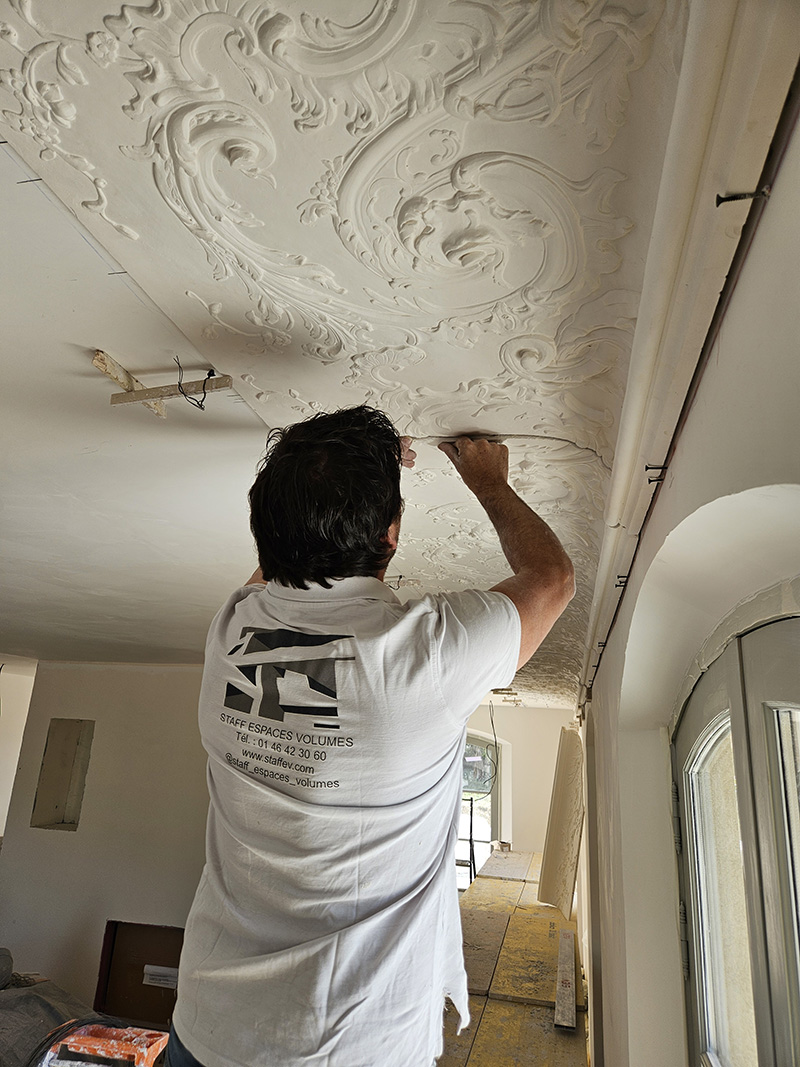
Initially, staff was used in architectural projects as an alternative to marble or stone, which were more expensive and heavier. It became a popular choice for public buildings, theaters, private mansions, and monuments, especially for interior decorative elements like ceilings and friezes. Offering ease of molding and affordability, staff enabled the creation of ornamental works with a finish comparable to more prestigious materials.

Ceiling light in staff for the scenography of Les Nuits d'Été by Pierre Yovanovitch.
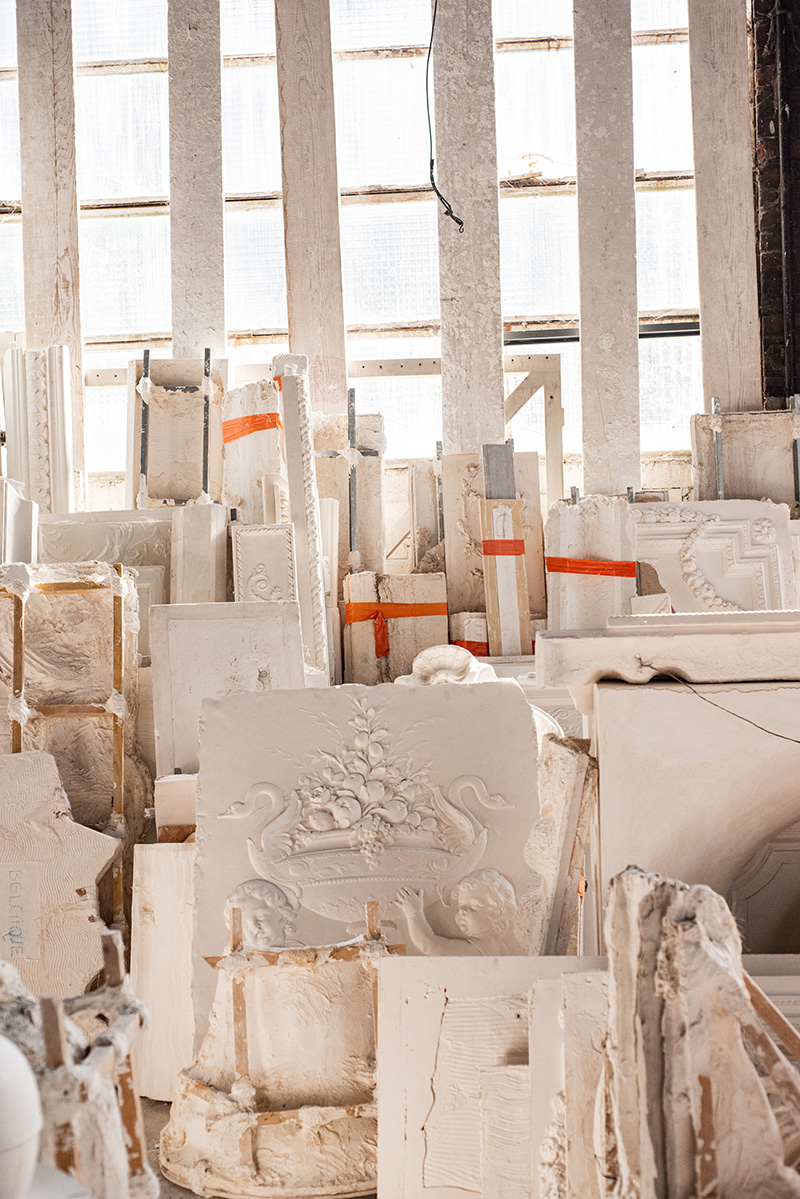
The staffer works with molds, enabling him to reproduce fine details with great precision, which makes him particularly appreciated in the creation of complex sculptures or ornaments.
In the 20th century, while modern materials gained prominence, staff remained a key material for the restoration of historic buildings and in contemporary artistic creations. Its lightness, durability, and adaptability for sculpting or molding made it a preferred choice for diverse applications in architecture and interior design.
Today, although it is less commonly used than in the past, staff remains cherished by artisans and designers for its versatility and its deeply rooted legacy in the art of decoration. Its enduring appeal bridges tradition and modernity, celebrating its role in the evolution of architectural artistry.
Staff properties
Staff is a lightweight and malleable material, ideal for creating complex or large decorative elements thanks to its ease of molding and ability to reproduce fine details with precision.
Durable and resistant when properly treated, it is suitable for both interiors and exteriors, providing good thermal and acoustic insulation.
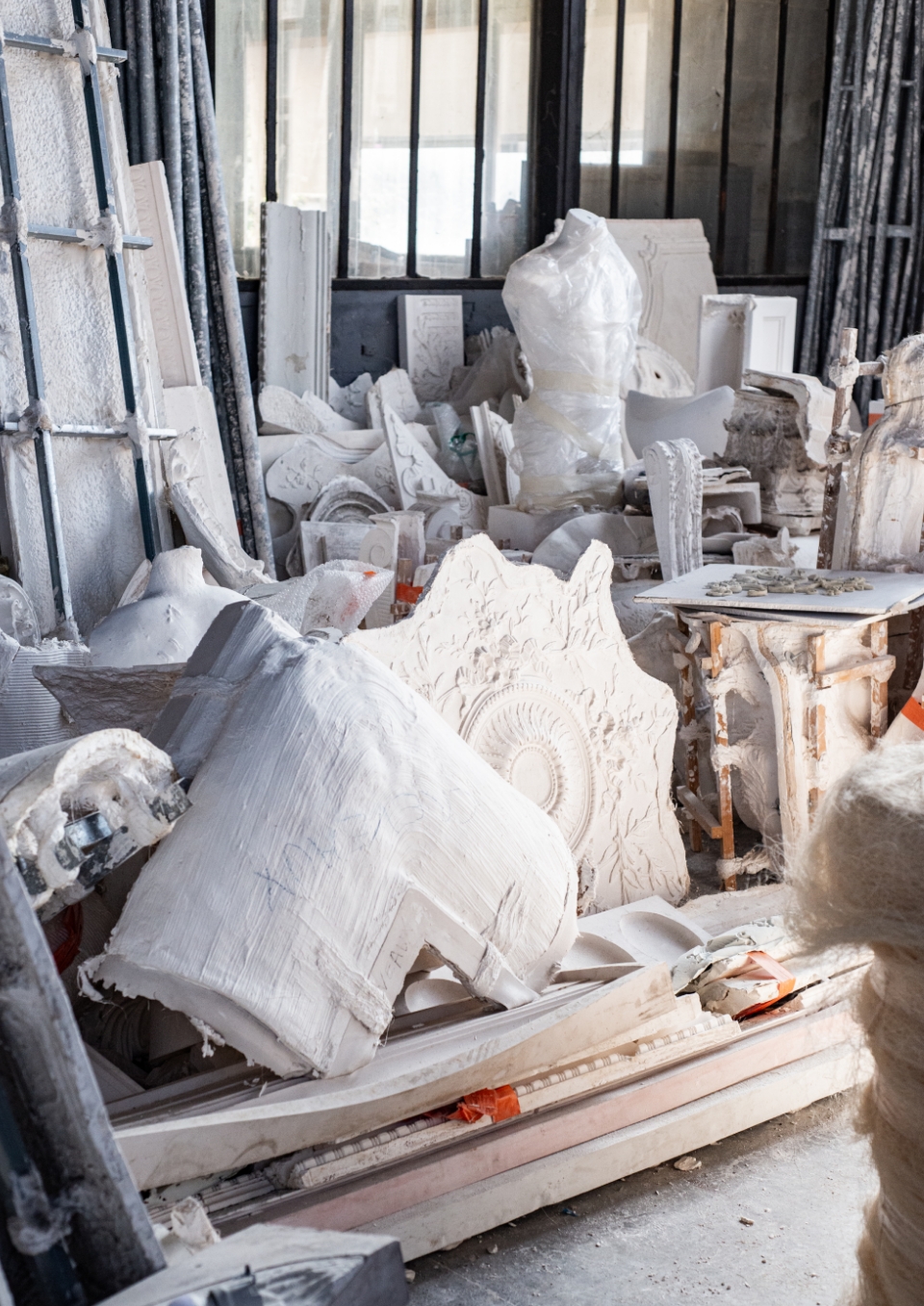
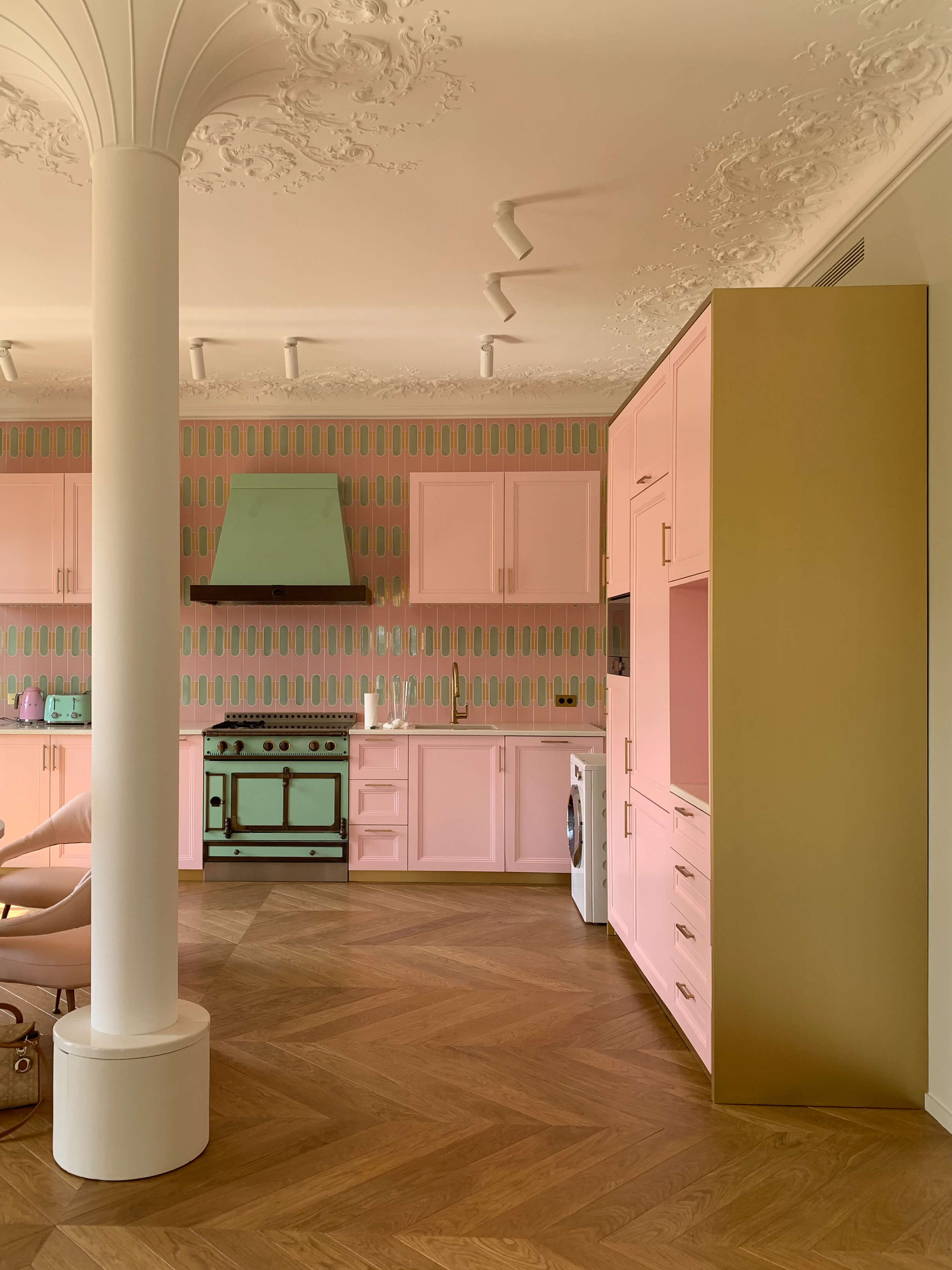
Its compatibility with various substrates makes it a preferred choice for a wide range of projects.
Easy to repair and customize, staff ensures a refined finish, whether painted, varnished, or left in its natural state. Finally, its natural composition—made from plaster, water, and vegetable fiber (sisal)—makes it a 100% natural and eco-friendly material.
In fact
Light, malleable material
Firestop
Durable and resistant
Easy to repair and customize
Good thermal and acoustic insulation
100% natural and ecological
Our expertise
Our expertise in staff work covers a wide range of skills, from design to installation.
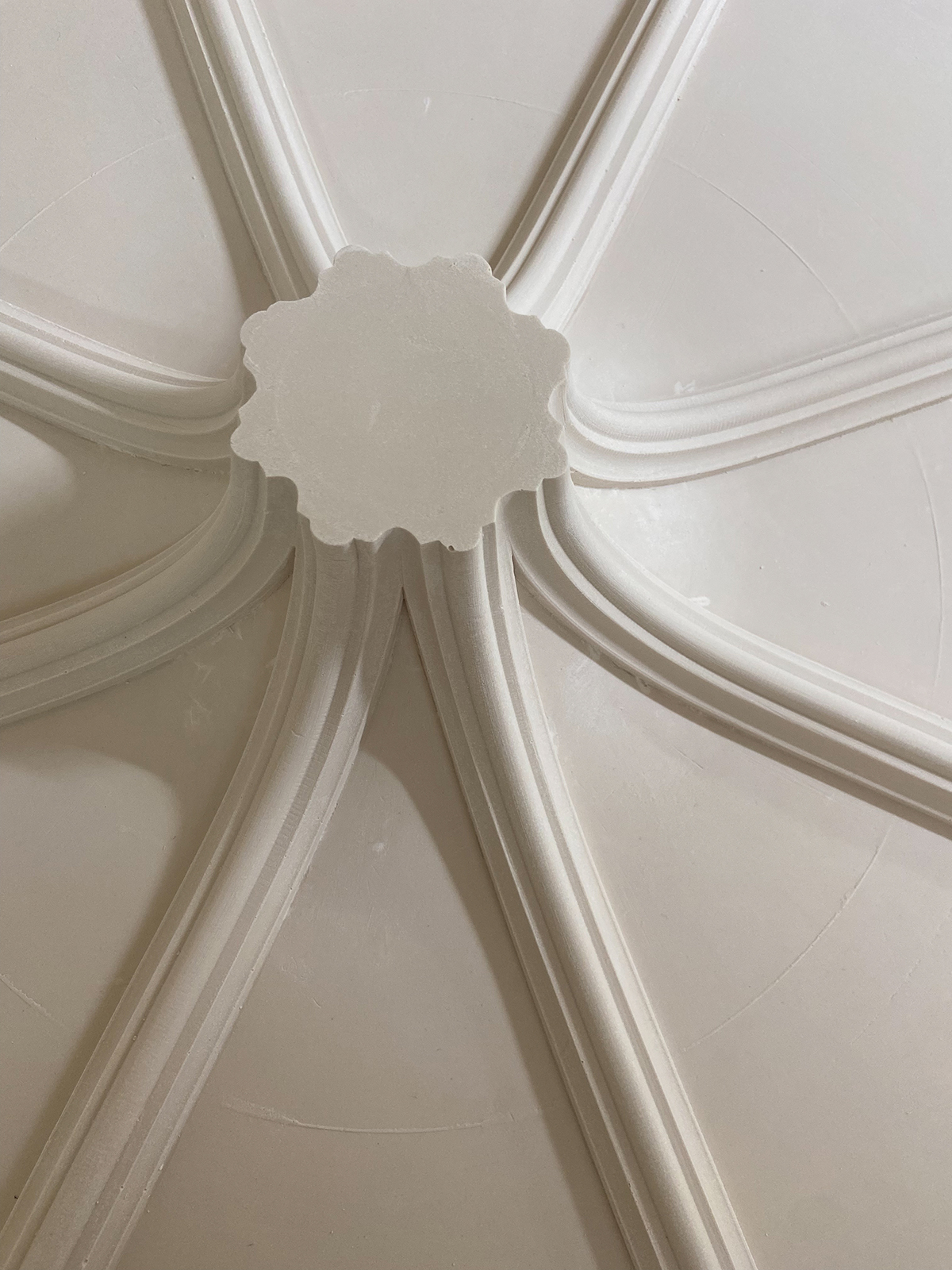
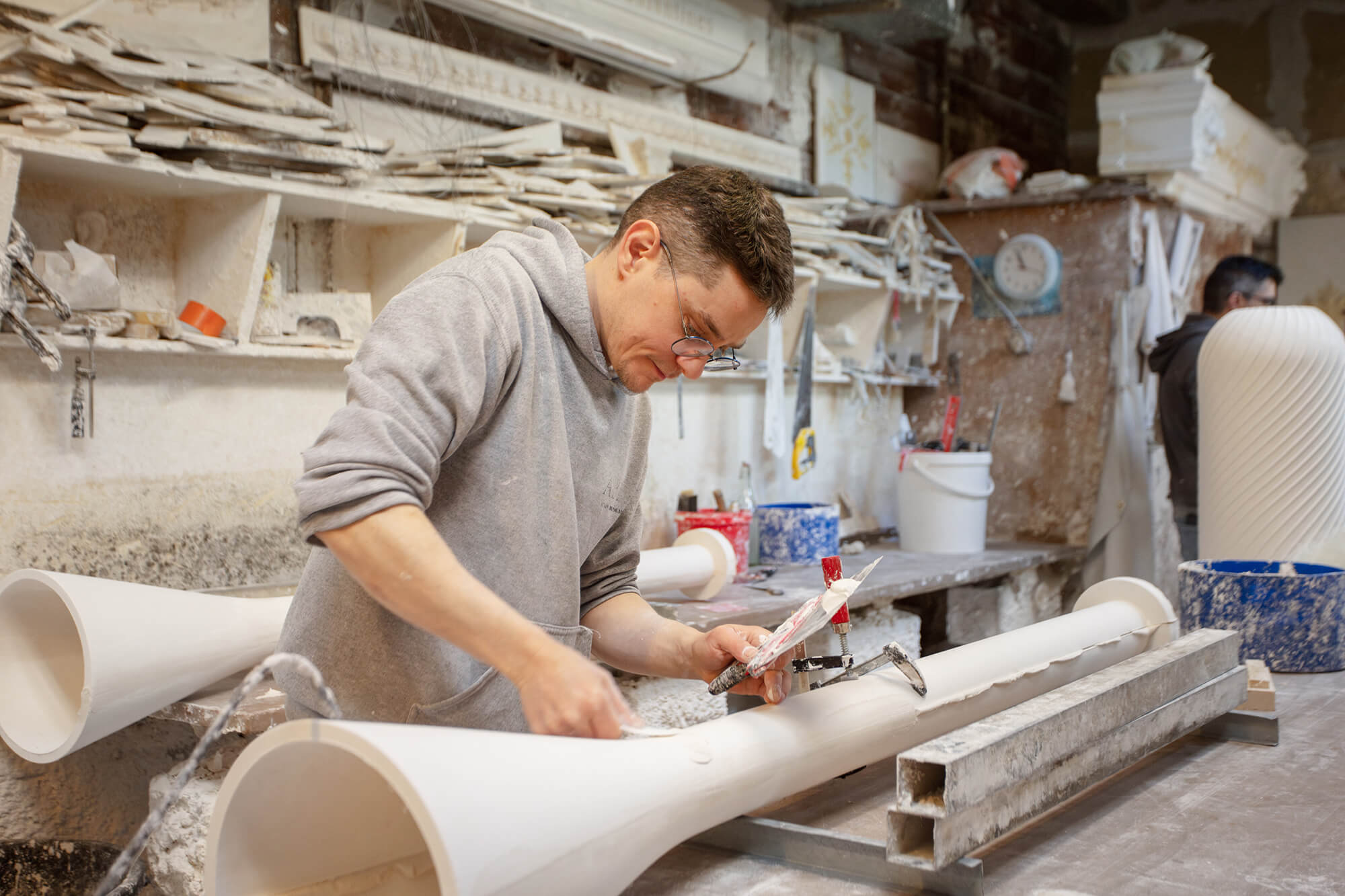
Our teams conduct feasibility studies through the mastery of technical execution drawings, 3D models, and prototypes, allowing for the visualization and validation of your project in advance.
We are also called upon to make creative proposals for individuals.
Our proficiency in staff techniques, such as dragging, molding, and stamping, enables us to create or reproduce decorative elements like moldings, cornices, ceilings, rosettes, pilasters, as well as objects or furniture such as wall sconces, balustrades, tables, and light fixtures.
Our plaster sculpture skills allow us to transform a drawing into volume for the creation of bas-reliefs, moldings, or ornaments for the design or restoration of architectural elements.
We also offer various texture effects for plaster finishes (scratched, gouged, material imitation, etc.).
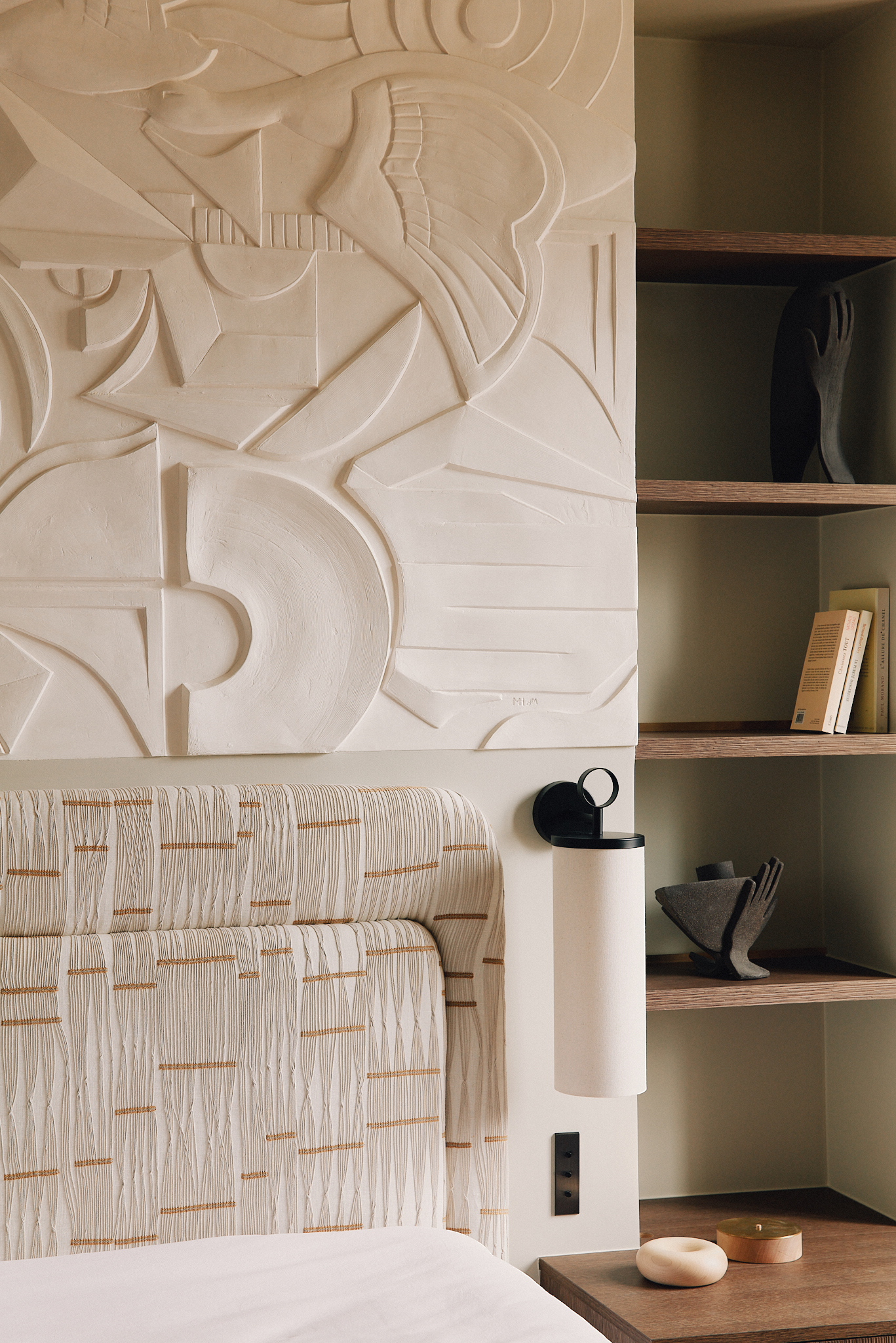
Some creations can be shaped directly on-site. This method, carried out by qualified craftsmen, offers unique flexibility to meet specific site constraints or precise aesthetic demands of a project. This custom approach enables us to execute one-of-a-kind projects, such as fireplace cladding.
We handle the installation of staff work with a team of experienced professionals, who pay meticulous attention to detail and finishes, ensuring precise and polished results for every project.
The project managers play a key role in overseeing and coordinating construction sites. They monitor projects from planning to completion, ensuring deadlines, budgets, and quality standards are met. They collaborate with clients, architects, and craftsmen to guarantee the success of the project.
Their attention to detail and adaptability are essential to maintaining high standards throughout the work.
